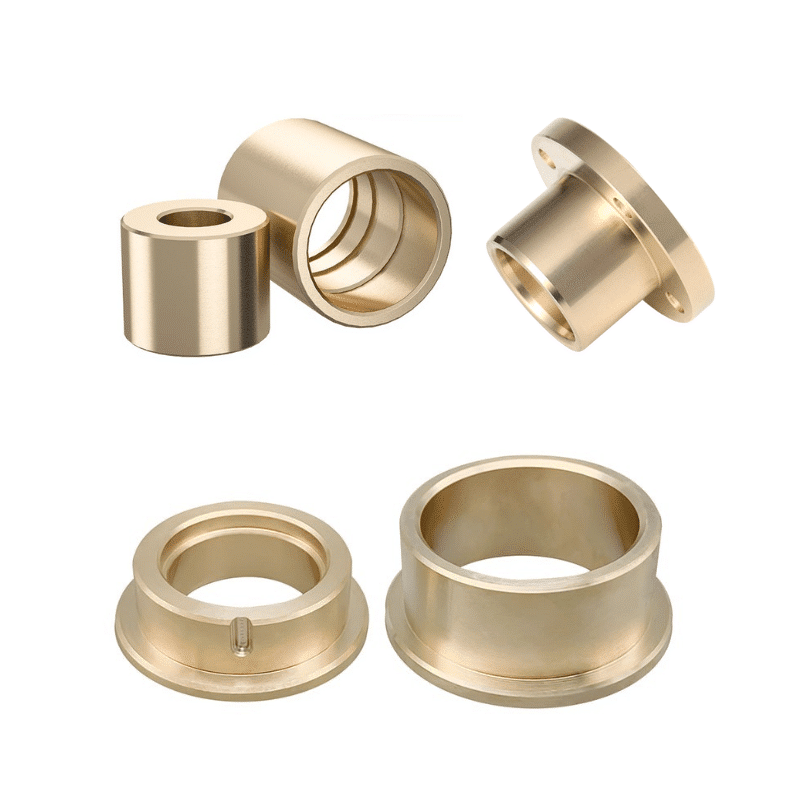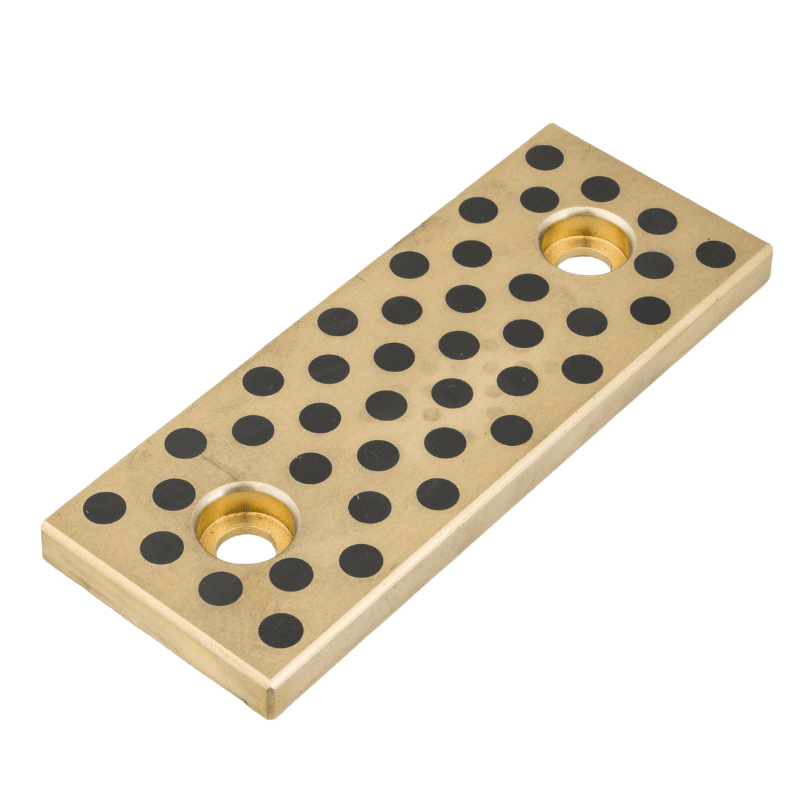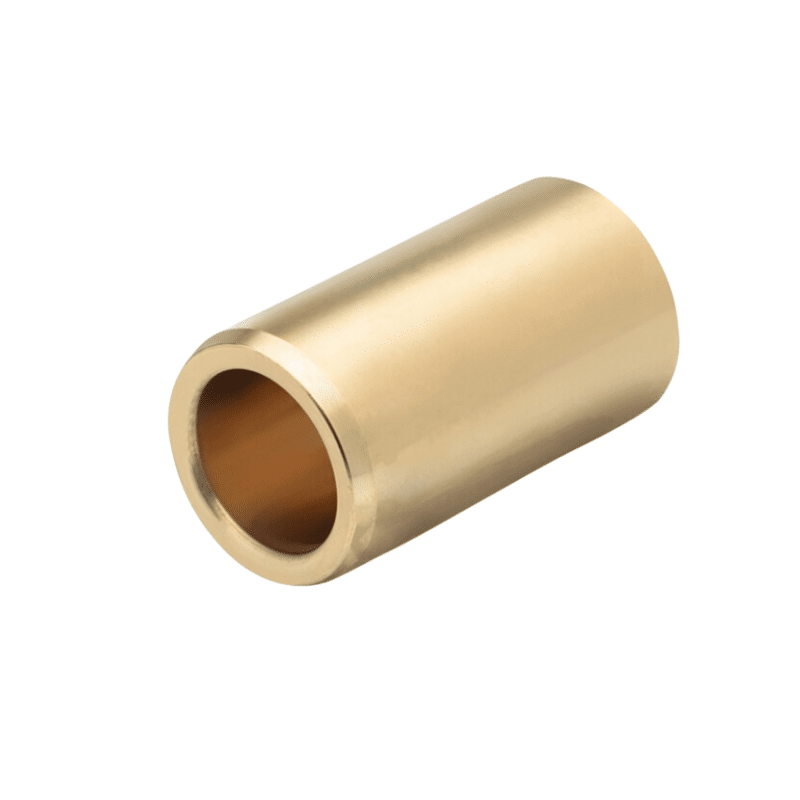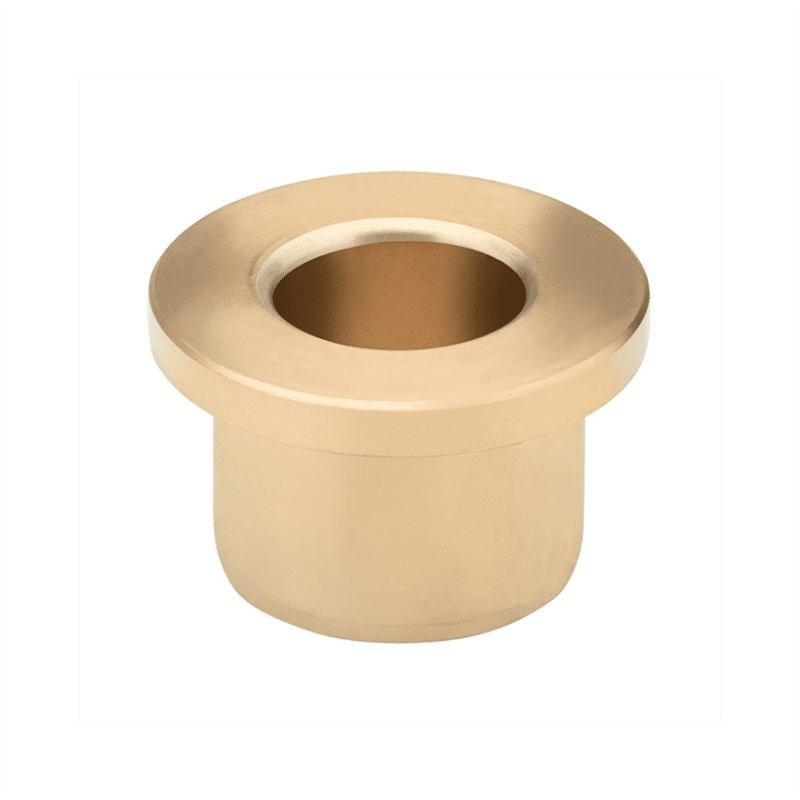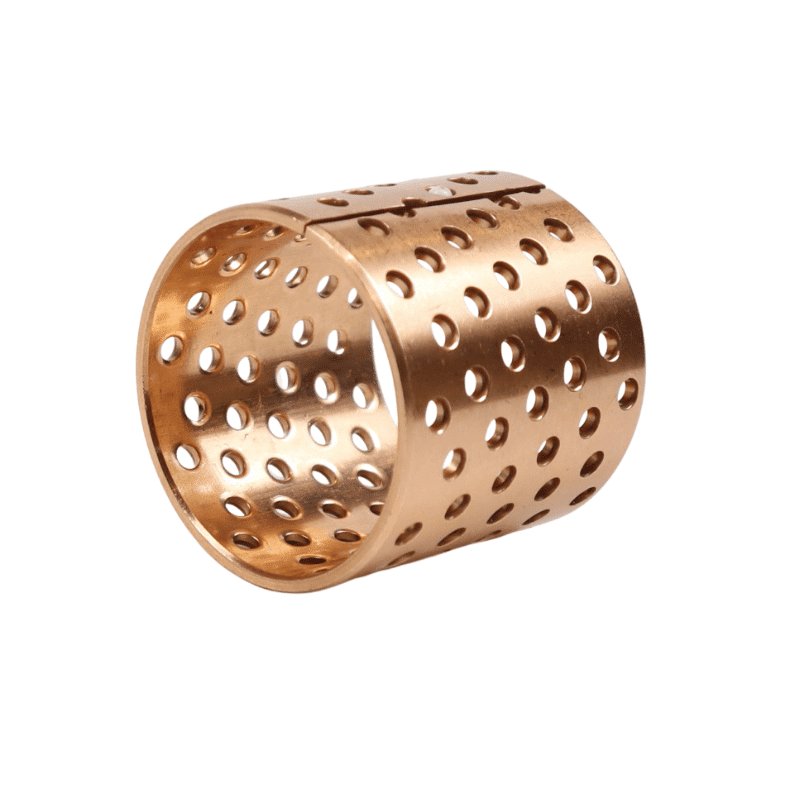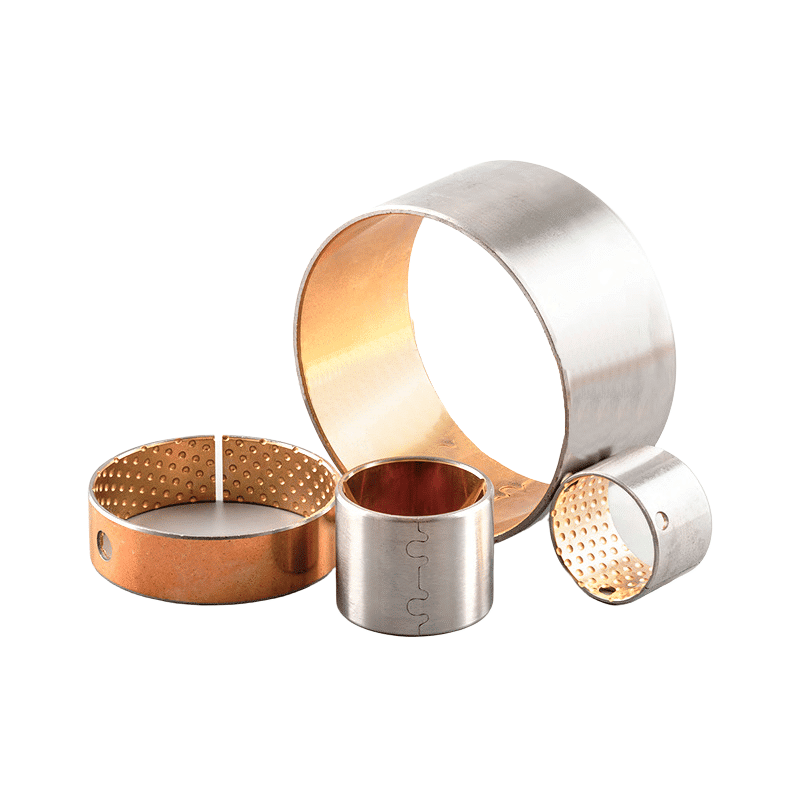Journal Bearing Types
Journal Bearing Types
Say goodbye to the hassle of frequent lubrication maintenance. Our self-lubricating technology ensures smooth operation and reduces wear and tear, extending the lifespan of your equipment. Experience uninterrupted productivity and cost savings as you bid farewell to the need for messy lubricants and time-consuming upkeep.
Manufacturing on Demand, alternative solutions
Journal Bearing Types
Solid bronze journal bearings typically use grease for lubrication, although oil may be employed in specific applications, journal bearing material, brass journal bearing
Bronze journal bearings are renowned for their self-lubricating feature, which is primarily facilitated by the hydrodynamic action that occurs during their operation. This action ensures the maintenance of a lubricant film, attributing to the self-lubricating properties of the bronze material itself. This makes these bearings highly suitable for applications that require the ability to support heavy loads. Moreover, the design of these bearings often includes lubrication grooves and oil holes, which are essential for enhancing lubrication efficiency and minimizing the risk of metal-to-metal contact, thereby diminishing friction and wear.
The operational lubrication method is crucial for the optimal performance of bronze journal bearings, with the hydrodynamic lubrication mode playing a pivotal role. In this mode, a constant oil film is established between the bearing surfaces and the shaft, effectively preventing any contact between metal surfaces and thus significantly reducing friction. For hydrodynamic lubrication to be effective, certain conditions must be met, such as operating at a velocity greater than 25 surface feet per minute and using lubricant with the correct viscosity. This lubrication mode is instrumental in achieving minimal friction and wear, enabling the bearings to handle exceedingly heavy loads and function at elevated rotational speeds.
Furthermore, bronze journal bearings can utilize either oil or grease for lubrication, with some models featuring grease reservoirs and built-in lip seals to accommodate lubricated operations.
Self-Lubricating Options: journal bearing types, journal bearing material, bronze bearing, Proven Bushing Bearing Material, Tri-metal Journal bearings,
Advanced Material Options
Journal bearings are available in a multitude of varieties and are constructed from several materials, among which bronze is a notable example. This overview encapsulates the diversity of journal bearings and highlights the utilization of bronze as a bearing material.
Diverse Types of Journal Bearings:
- Solid Sleeve Bearings: A prevalent variant of plain journal bearings, these consist of a rotating shaft encased in a stationary sleeve. They are typically fashioned from materials that minimize friction, such as bronze or babbitt, making them apt for applications demanding a high capacity for load-bearing.
- Semilubricated Journal Bearings: Featuring a rotating shaft within a porous sleeve made from sintered bronze or aluminum, these bearings integrate lubricating oil directly within the bearing structure. They are best suited for scenarios involving low loads, moderate velocities, and temperatures not exceeding 100°C (210°F).
- Tilting-Pad Bearings: Characterized by a rotating shaft housed within a shell composed of curved pads, each pad is designed to pivot independently, ensuring alignment with the shaft’s curvature.
Bronze as a Preferred Bearing Material: Bronze is favored in the manufacturing of journal bearings due to its significant load-bearing capability and inherent self-lubricating features. It excels in applications that demand high load endurance, including those subjected to impact loads, and is effective up to ambient temperatures of 300°F.
To encapsulate, journal bearings are differentiated into several categories, such as solid sleeve bearings and semilubricated bearings, with bronze being a preferred material owing to its excellent load-bearing and self-lubricating qualities.
journal bearing material
Journal bearing materials encompass a variety of substances chosen for their properties that reduce friction and wear between moving parts. These materials include:
- Bronze: Known for its excellent wear resistance and self-lubricating properties, making it ideal for heavy load applications.
- Bimetal: A soft, white metal steel bronze alloy used for its ability to conform to the shaft and embed foreign particles, preventing damage to the rotating shaft.
- Steel: Often used in combination with a coating or lining of a softer material; provides high strength and durability.
- Polymer and Composite Materials: Includes plastics and fiber-reinforced composites that offer low friction, good wear resistance, and can operate without additional lubrication.
- Sintered Metals: Porous metals impregnated with lubricants, used for applications requiring self-lubricating properties.
Each material has its unique advantages and is selected based on the specific requirements of the bearing application, such as load capacity, speed, temperature, and environmental conditions.
Selection of Suitable Material for Journal Bearing by Tribology, Tri-metal Journal bushing bearings, 3 layers.
Given the critical role of journal bearings in numerous applications, choosing a material that consistently exhibits a low wear rate and a minimal coefficient of friction is crucial. The materials evaluated for these criteria include Molybdenum Disulphide (MoS2) and Stainless Steel (SS 304).
Three-layer journal bushing bearings, also known as tri-metal bearings, feature a composite structure designed for durability and performance. The foundational layer is steel, offering structural support and shape. The middle layer, typically crafted from copper alloys such as leaded bronzes or aluminum bronze, acts as the primary bearing surface. The outermost layer, an overlay, is composed of softer metals like lead or tin alloys, enhancing the bearing’s ability to prevent seizure under high loads and providing excellent wear characteristics.
Additionally, there’s the self-lubricating multilayer composite bushing, a specialized bearing variant. This design incorporates a steel backing for rigidity, a sintered bronze intermediary for structural integrity, and a top layer of polytetrafluoroethylene (PTFE) infused with fillers for reduced friction. This configuration ensures a maintenance-free operation and superior friction management in high-load situations.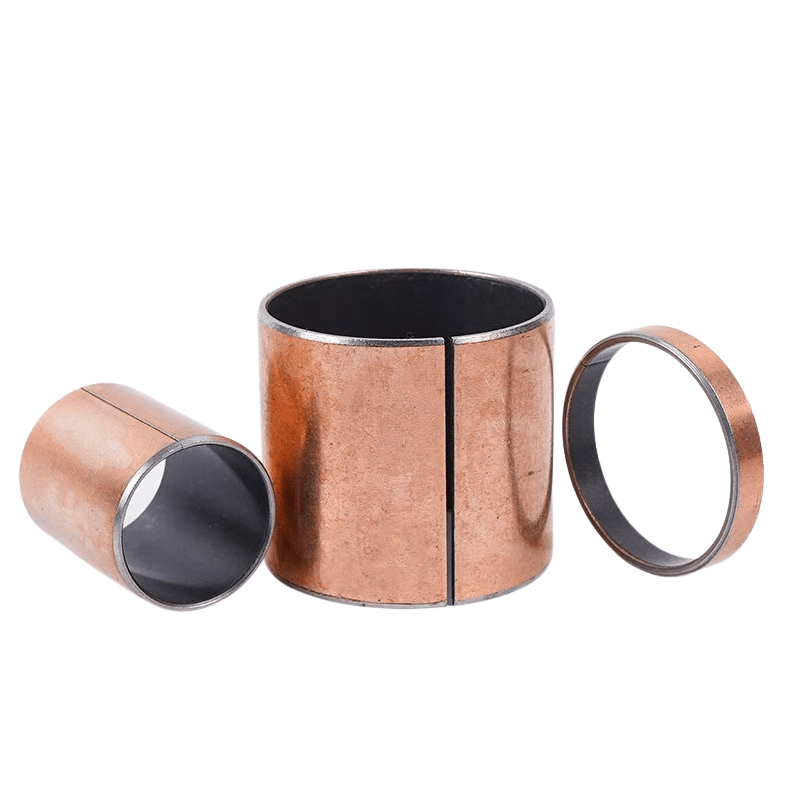
Tri-metal journal bushing bearings, with their three-tier composition of a steel base, a functional middle layer of copper alloys, and a soft metal overlay, are engineered to offer robustness and prevent seizing, making them ideal for applications subjected to intense loads.
Your expert in self-lubricating Bearing
and Bronze alloys – serving globally
Brand replacement products and functionally equivalent parts, alternative solutions
Manufactures flange bronze bearings, service & maintenance companies to meet the exacting specifications required in a wide range of industrial applications.
Machined bronze bushing that meet the exacting requirements & specifications supplied by our clients. Spherical bearings, spindles, semi-spheres and supports that we have manufactured.
You will find to follow a selection of self lubricating bronze bearing material CuSn7Zn4Pb7, CuSn12, CuAl10Fe5Ni5,
CuZn25Al5Mn4Fe3
Alternative solution,We offer an outsourced machining service for bronze bushes, manufacturing precise parts to the designs supplied to us by our clients.
Selection of other composite bushing material of self lubricating bearing that we have manufactured.
Wrapped Bronze Sleeve Bearing, Are you interested in our products?
Manufacturer of bimetal and steel bronze bushing parts according to client’s drawing.

